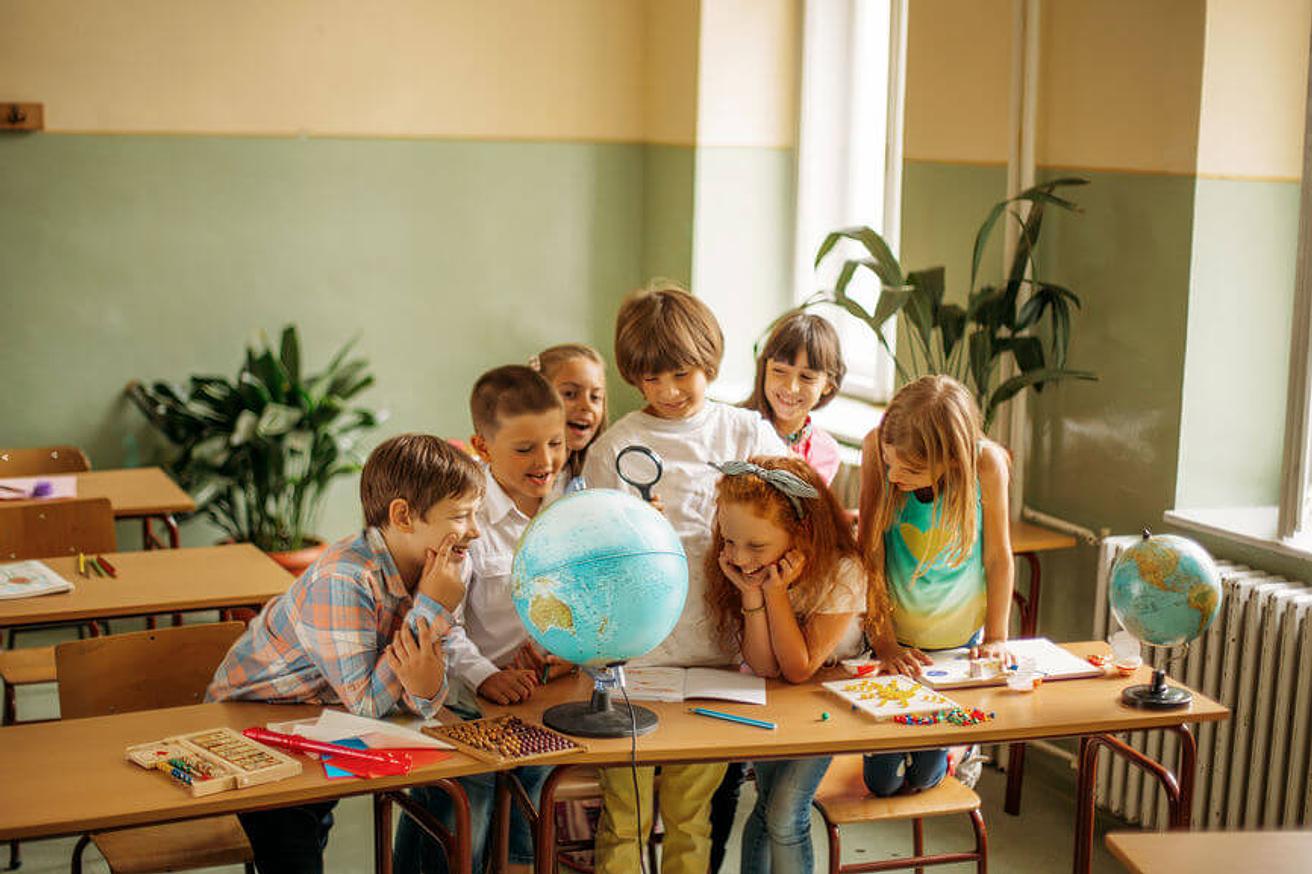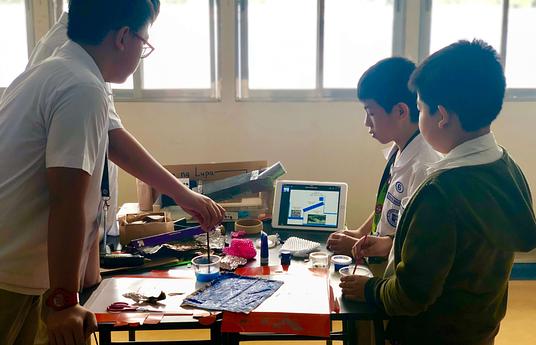Living in a globalized world, where we are more connected to each other than ever before, brings a new set of challenges – and opportunities – for today’s societies. Though globalization often conjures a negative picture of a homogenized world that negates the need for independent local cultures, there is a choice to allow globalization to bring out the best of humanity. We need to be globalized in order to tackle the challenges that face our world, particularly climate change, and working collaboratively on a global scale is the only way to make sure we tackle this problem with every culture, country, and person in mind; to ensure that no one is left behind.
A globalized world and its problems are what future generations are going to inherit, so it’s imperative that today’s education helps to prepare them for tomorrow’s world. In order to do this, we need to help children to build a global mindset that gives them the creativity, knowledge, and skills that allows them to work collaboratively across the globe on the world’s biggest challenges.
In the Philippines, one school is already making this a reality for their students. At Xavier School in Manila, a small makerspace has been integrated into the school to help kids learn and create solutions to the world’s problems through the Kids Can! Innovation Camp. Kids Can! gives students the opportunity to collaborate in solving real-life problems through blending authentic learning, empathy and STEAM skills with lessons aligned with the UN’s Sustainable Development Goals.
Aligning what the students work on with real-life problems encourages them to actively engage with what they’re learning as there are real outcomes to the solutions that they develop. In a time of high-disengagement in education, due to schools not being able to keep up with the world outside that the children live in and therefore curriculums seeming outdated and irrelevant to the children’s own lives, having them work on real projects that have lasting effects on their communities builds engagement and enthusiasm in an organic way.
Integrating projects that align with the SDGs only takes a little extra effort on the part of educators, as Francis Jim Tuscano, EdTech Coordinator and Department Chair for the Religious and Values Education at Xavier School, has found, ‘It was a great realization that despite the non-formal integration of the Global Goals in many schools’ curriculums, there are a number of lessons in various subjects (such as in Science and Social Science) that are connected to the SDGs.’

For Tuscano, project-based learning, long been championed as how to increase engagement rates in the field of education, is a great tool to capture children’s imaginations and help them to connect to the new material. ‘Project-based learning ensures that students do not only talk about the problems being solved but actually to create possible solutions through independent inquiry,’ explains Tuscano.
It’s not enough, however, to simply have young people create solutions by only looking at the problem from a STEAM standpoint. To truly create meaningful solutions that help the world’s communities, empathy has to be integrated into STEAM education, and this is precisely what Xavier School focuses on in the innovation camp. ‘The use of design-thinking ensures that the solutions being created are human-centered,’ explains Tuscano, ‘which means that they have to understand through empathy techniques the situations and contexts of the people being affected by the problems that they are solving.’
Tuscano has coined the term E+STEAM, ‘the act of helping students understand and solve problems using skills they learned in STEAM interdisciplinary classes, but with the bigger challenge to always start with empathizing with the people who are affected by the real problems being discussed in the classroom.’
Our world’s history has for too long had a savior complex. We are used to the narrative of people, usually of white heritage, going into countries they have no relation to and ‘solving’ problems for them in a euro-centric way. If we are to tackle the problems facing our global society, we need to listen to people’s experiences and understand the way they live in order to make sure we collaborate together to come up with solutions to help preserve their way of life and protect them against the onslaught of climate change. As Tuscano noted:
It can leave a bitter taste in our mouths to train a generation to create solutions for problems they played no part in creating, however for Tuscano it’s important to weave sustainability into education in order to cultivate sustainable mindsets. ‘The concept and challenge of a sustainable world must be taught early to our students, because sustainability is not just about designing products or policies that would lead to a sustainable world, it is also a mindset that needs to be inculcated early in our minds so that all our actions are directed towards achieving a sustainable world. Right now, the goal of a sustainable world is hard to reach because most of us do not have a sustainable mindset. For Kids Can!, the focus really is not on the projects or products, but on the process and the development of the eagerness and curiosity towards a sustainable world.’
It is this curiosity that can hold the key to creating a lasting imprint on today’s students so that the projects they work on aren’t just a nice educational experience, but help them to develop a global mindset that lasts. ‘Curiosity ignites authentic and meaningful learning,’ explains Tuscano. ‘Tapping into their curiosity leads to more engaged and authentic learning, asking more questions and searching for answers. In this thirst for better answers, we hope that they get hooked with the ultimate challenge of finding solutions to our problems.’ To make sure curiosity leads to actual, sustained learning, Tuscano explains that ‘it is then important that this curiosity is translated into concrete solutions or projects in the classroom’ to make the most of this learning opportunity.
At the heart of it, the Kids Can! Innovation Camp is not about getting students to create professional solutions to the world’s problems, but instigating that vital curiosity in the natural world and our global community, which is something that will last for years to come. Curiosity, after all, is the natural catalyst of all learning. It is also through establishing this curiosity that Tuscano knows the Kids Can! programme has been successful. ‘I know that Kids Can! has successfully achieved its goal when students come to me and their teachers and request for more opportunities to talk about and solve pressing problems in our world,’ he explains.
There are plenty of opportunities for children to work on global projects, particularly when considering the UN’s SDGs. However, what the Kids Can! Innovation Camp does differently is focusing on how to create a real lasting impact on the children at the school. This isn’t just through the use of real-world, project-based learning exercises, it’s something more fundamental than that. It’s about igniting curiosity in children and helping them to understand that solutions need to be empathy-based in order to be meaningful. Through achieving this we can ensure that for years to come young people will still be considering what they can do to help and to know that there are solutions to every problem they encounter. This is truly what it means to be globally-minded, and if we foster it in today’s children, we’ll all feel the benefits in the future.

